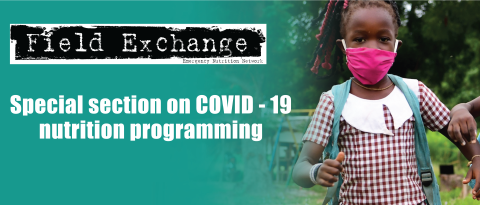Assessing nutrient gaps and affordability of complementary foods
Research Snapshot1
Identifying nutrition and dietary gaps alongside foods that are best matched to fill these gaps is essential to inform nutrition-related policies and programmes. The five research papers in this Nutrition Reviews supplement address these questions for young children in Eastern and South Africa and South Asia. The first article by Beal et al (2021a) introduces a novel methodology for identifying the public health significance of nutrient gaps in children’s diets. The methodology, called Comprehensive Nutrition Gap Analysis (CONGO), collates all relevant data points from a given region and provides clear criteria for rating the nutrient gap (as negligible, low, moderate or high) implied by each data point. The methodology then assigns weights to each data point based on evidence type, geographic representation, recency of data collection, age and sex representation and sample size. For each nutrient, an overall nutrient gap rating is derived as well as an evidence quality rating.
The next two articles (White et al, (2021); Beal et al, (2021b)) detail the application of CONGO for children 6-23 months of age. The studies found clear differences in the availability of relevant data by country and micronutrient. Furthermore, important nutrient gaps were identified in iron, vitamin A, zinc, calcium, vitamin C (South Asia only), vitamin B12 and folate. The last two articles (Ryckman et al, (2021a); Ryckman et al, (2021b)) identified the most affordable foods that could close the nutrient gaps previously identified. They found several nutrients with few affordable sources, with zinc being universally unaffordable.
While it is too early to say for sure whether these deductions are indeed valid, these papers provide a strong basis for the design of interventions to improve the nutrition of infants and young children in the poorest regions of the world.
1Morris, S S, Garg, A, Black, E R Assessing the nutrient gap and the affordability of complementary foods in Eastern and Southern Africa and South Asia. Nutrient Reviews. 2021; 79 (S1): 1-3. https://doi.org/10.1093/nutrit/nuaa149.
References
Beal, T, White, M J, Arsenault, E J, Okronipa, H, Hinnouho, G, Morris, S S (2021a) Comprehensive Nutrient Gap Assessment (CONGA): A method for identifying the public health significance of nutrient gaps. Nutrition Reviews: 2021; 79(S1): 4-15. https://doi.org/10.1093/nutrit/nuaa140.
White, M J, Beal, T, Arsenault, E J, Okronipa, H, Hinnouho, G, Chimanya, K, Matji, J, Garg, A (2021) Micronutrient gaps during the complementary feeding period in 6 countries in Eastern and Southern Africa: A Comprehensive Nutrient Gap Assessment. Nutrition Reviews: 2021; 79(S1): 16-25. https://doi.org/10/1093/nutrit/nuaa142
Beal, T, White, M J, Arsenault, E J, Okronipa, H, Hinnouho, G, Murira, Z, Torlesse, H, Garg, A (2021b) Micronutrient gaps during the complementary feeding period in South Asia: A Comprehensive Nutrient Gap Assessment. Nutrition Review: 2021; 79(S1): 26-34. https://doi.org/10.1093/nutrit/nuaa144.
Ryckman, T, Beal, T, Nordhagen, S, Chimanya, K, Matji, J (2021a) Affordability of nutritious foods for complementary feeding in Eastern and Southern Africa. Nutrition Review: 2021; 79(S1): 31-51. https://doi.org/10.1093/nutrit/nuaa137.
Ryckman, T, Beal, T, Nordhagen, S, Murira, Z, Torlesse, H (2021b) Affordability if nutritious food for complementary feeding in South Adia. Nutretion review. 2021; 79(S1): 52-68. https://doi.org/10.1093/nutrit/nuaa139.


